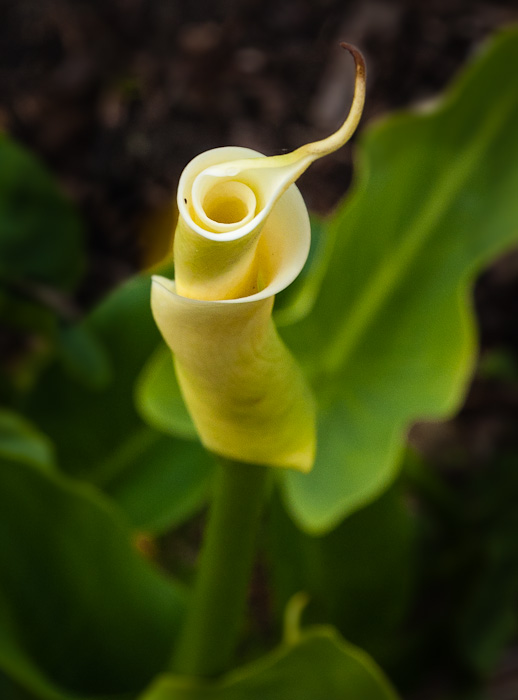Actually only two different lilies, found in the Bolton Street Memorial Park growing beside graves from the colonial era. A is for Arum italicum, I presume brought here by English settlers who were used to growing it in gardens as a woodland or shade plant - it provides winter interest in places where much is bare at that time.
Here in New Zealand it is categorised as a pest plant - in autumn it produces crops of brilliant red berries which are poisonous to people but palatable and tolerable to birds - like the also imported blackbird - which spread it around.

This dense clump made an attractive weed-suppressing carpet of the rich green arrowhead-shaped leaves with their distinctive creamy markings.
Z is for Zantedeschia aethiopica. Confusingly it is called the arum lily - so this is a full alphabetical circle.
Also an introduction, it is often found in damp areas on pastureland, wasteland, where settlements once were, and in cemeteries - as this one was.
This close-up of a bud shows the unfurling shape of the spathe which appears almost a yellowy cream at first but opens to the familiar white flower (in botanical terms strictly not a flower, the white spathe curls around the central yellow spadix, which has a grouping of tiny true flowers.)

Although strikingly elegant in flower and prized elsewhere as a garden plant, here it is also a pest, and for many people strongly associated with death.

Maybe it could be seen as a sinister beauty, but caught in the winter light I see only the gorgeous swirl, and fresh life here amidst memorials to people and times past.